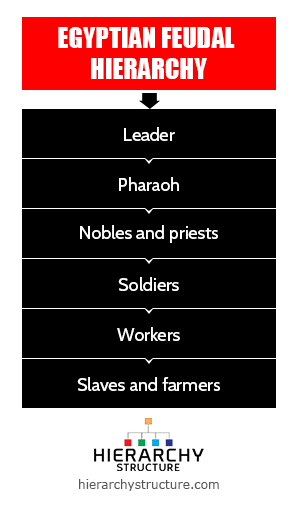The Feudal hierarchy system in Egypt could be considered as a mix or combination of political, social and economic systems which also described or defined the relationship between people belonging to different ends of the society. The manner in which people were divided into classes was also related to the kind of wealth they had, jobs they had and education that they obtained. In ancient Social Egypt, the society was like a pyramid which followed a hierarchical structure. At the topmost positions were the kings who were considered to be the gods in human form whereas under them came a chain of command which has been given as follows:
Leader
The leader or the king in the feudal system in ancient Egypt was considered to be the god by the people and was the one who gave orders for others to act upon. All laws were made by him and all the taxes were paid to him by the farmers. He appointed several people under him to help run the kingdom or administer the land.
Pharaoh
The Pharaoh was appointed as the chief minister and was also known as the vizier. He made sure that all the taxes were collected by the people or farmers and was a high level employee who could read and write-this was a major and rare skill in those days.
Nobles and Priests
In the feudal hierarchy of Egypt, at the next position cam the nobles and the priests who held government posts and jobs. The priests were those people who prayed to the gods and were responsible for pleasing them. Both nobles and priests enjoyed a lot of privileges and great status. They were also very wealthy.
Soldiers
The soldiers fought in war or helped to bring calm in the city through their skills of good physical strength and knowledge of warfare. They also supervised other people of the society when there was no war.
Workers
The common people or workers worked in various places of the society to earn wages and live their lives. Most of the common jobs were that of craftsmen, physicians, sellers of goods, artisans and traders.
Slaves and Farmers
At the bottom of the heap were the slaves and farmers who had little wealth and little social standing. Only a small number of people from this class moved up the ladder through their skill or by learning trades.

